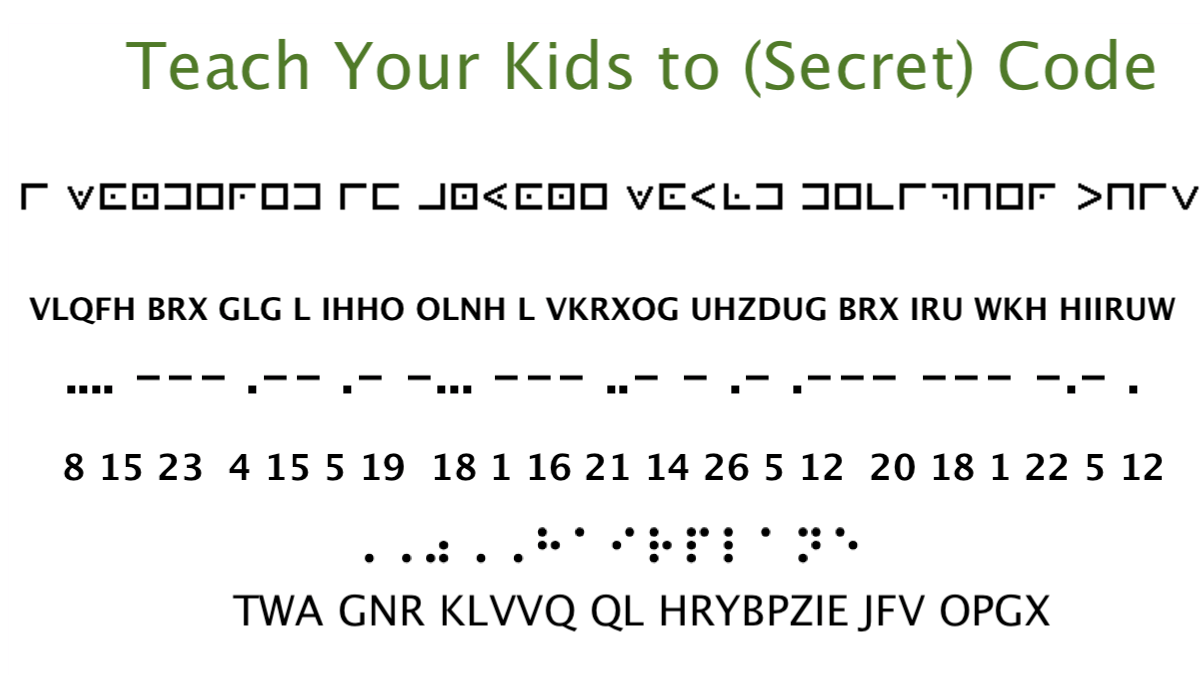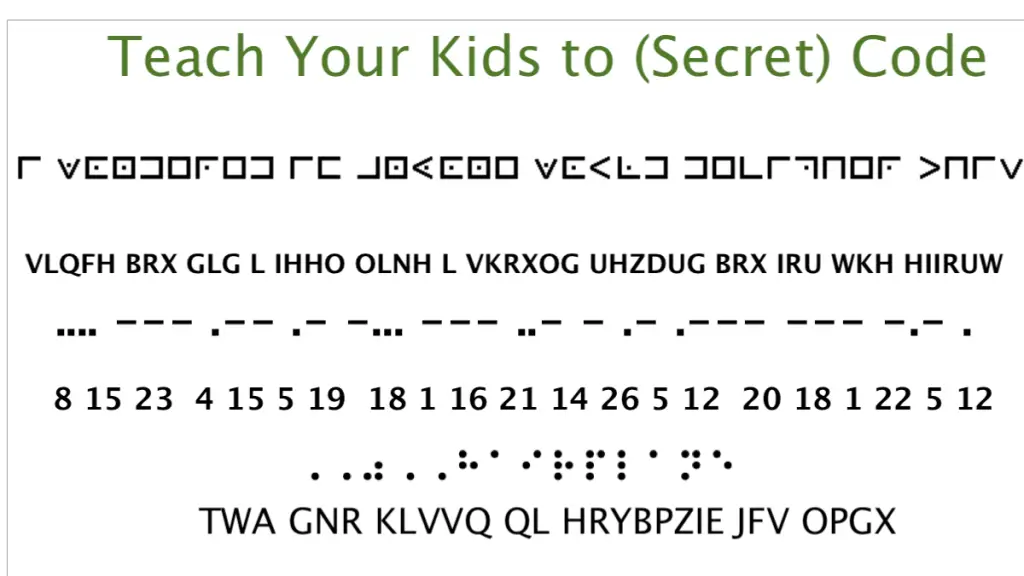Last Updated on March 12, 2023 by Francis
Secret codes have been used throughout history to protect sensitive information and keep it away from prying eyes. From the Caesar Cipher used by Julius Caesar to the Enigma machine used by the Nazis during World War II, secret codes have been used to keep confidential information hidden. But what exactly are all the secret codes out there? In this article, we will explore the different types of secret codes and how they are used. So keep reading to find out all the secret codes that are out there and how they are used!
For “How To” keywords:
- Identify the type of code you are looking for.
- Locate the code within the user manual, game or computer.
- Follow the instructions given in the user manual, game or computer to access the code.
- Enter the code into the appropriate field to unlock the hidden levels, characters or items.
For “VS” keywords:
| Code Type | Location | Instructions |
|---|---|---|
| Phone Codes | User Manuals | Follow instructions in the user manual to access the code. |
| Computer Codes | Computer | Follow instructions in the computer to access the code. |
| Video Game Codes | Video Game | Follow instructions in the video game to access the code. |

Contents
What are the Different Types of Secret Codes?
Secret codes have been used for centuries to protect sensitive information and to keep certain conversations private. These codes are often used by government agencies, military organisations, and other private entities to protect confidential information. Secret codes come in many different forms, including substitution codes, transposition codes, and even digital codes. In this article, we will explore the different types of secret codes, their uses, and how they are created.
Substitution Codes
Substitution codes are one of the oldest forms of secret codes, and they involve replacing one letter or word with another. This is done by creating a codebook which contains a “key” that tells the user which letter or word to substitute. Substitution codes can be very difficult to break, as they require knowledge of the codebook and the code itself. For example, a codebook might tell the user to substitute the letter “A” with the letter “X”, and the letter “B” with the letter “Y”.
Substitution codes are often used to encrypt messages and other confidential information. They are also used to protect passwords and other sensitive data. While substitution codes can be difficult to break, they can also be easily cracked if the codebook is known or can be determined.
Transposition Codes
Transposition codes involve rearranging the order of the letters in a message. This can be done by writing the message in a column, and then rearranging the columns to form a new message. Transposition codes are much harder to crack than substitution codes, as they require knowledge of the codebook and the message. Transposition codes can also be used to encrypt messages and other confidential information.
Digital Codes
Digital codes are the most common form of secret codes today. These codes are created using a computer algorithm, and they are often used to encrypt sensitive data. Digital codes are often used to protect passwords, credit card information, and other confidential data. They are also used to authenticate users and to protect digital identities.
How are Secret Codes Created?
Secret codes can be created in a variety of ways, depending on the type of code being used. For example, substitution codes require a codebook to be created, and transposition codes require the rearrangement of letters. Digital codes, on the other hand, require the use of an algorithm to generate the code.
Substitution Codes
Substitution codes are typically created by creating a codebook which contains a “key” that tells the user which letter or word to substitute. This codebook will typically contain a list of letters or words and their corresponding substitutes. The codebook is then used to encrypt the message and the coded message is then sent to the intended recipient.
Transposition Codes
Transposition codes are created by writing the message in a column, and then rearranging the columns to form a new message. This new message is then sent to the intended recipient.
Digital Codes
Digital codes are created using a computer algorithm. This algorithm is used to generate a coded message which is then sent to the intended recipient.
Uses of Secret Codes
Secret codes are often used to protect confidential information and to keep certain conversations private. They are also used to encrypt messages and other data, to authenticate users, and to protect digital identities.
Government Agencies and Military Organizations
Government agencies and military organizations often use secret codes to protect sensitive information. These codes are used to keep certain conversations private and to prevent confidential information from being leaked.
Other Private Entities
Other private entities also use secret codes to protect confidential information. These codes are used to encrypt passwords and to protect sensitive data. They are also used to authenticate users and to protect digital identities.
Top 6 Frequently Asked Questions
What are secret codes?
Answer: Secret codes are coded messages that can only be read and understood by the intended recipient. They are commonly used to protect sensitive information, such as military tactics and trade secrets. Secret codes may also be used to hide a message in plain sight, such as in a picture or newspaper article, or to provide a way to communicate without being detected.
How do secret codes work?
Answer: Secret codes work by using a specific set of rules or algorithms to convert plain text into coded messages. These rules or algorithms are known only to the intended recipient, who is able to decipher the coded message by reversing the process. Secret codes can be as simple as replacing each letter of the alphabet with a number, or as complex as using an algorithm to scramble the message in a way that only the intended recipient is able to decipher.
What is the history of secret codes?
Answer: Secret codes have been used throughout history by military, governments, and businesses to protect sensitive information and communications. The use of secret codes dates back to ancient times and has been used by civilizations such as the Greeks, Romans, and Chinese. In more recent times, secret codes have been used in the form of cryptography, which is the science of creating and deciphering codes.
What are some examples of secret codes?
Answer: Some examples of secret codes include substitution ciphers, which involve replacing each letter of the alphabet with a different letter or symbol; Caesar ciphers, which involve shifting each letter of the alphabet a certain amount of spaces; and Vigenère ciphers, which involve using a key word or phrase to encrypt the message. Other examples of secret codes include steganography, which involves hiding a message in an image, and one-time pads, which involve using a randomly generated key to encrypt the message.
Are secret codes still used today?
Answer: Yes, secret codes are still used today, though they have evolved over time to be more secure and sophisticated. Modern secret codes are often based on complex mathematical algorithms and are used by governments, businesses, and individuals to encrypt sensitive data or communications.
Are there any tools available to help me create secret codes?
Answer: Yes, there are a variety of tools available to help you create secret codes. These tools range from simple substitution ciphers to more complex algorithms. Many of these tools are available for free online and can be used to create and decipher secret codes. Additionally, there are a number of software programs available that can help you create and manage your own secret codes.
Geometry Dash ALL Vault CODES & Coins (2.1)
Secret codes have been used for centuries. They are an integral part of communication and have been used in various ways by different cultures. From military codes to computer ciphers, secret codes have been and continue to be an essential part of the development of communication and information systems. Knowing the various types of secret codes and how to use them can be a valuable tool for both security and communication.






